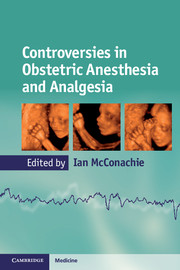
- Cited by 1
-
Cited byCrossref Citations
This Book has been cited by the following publications. This list is generated based on data provided by Crossref.
Misra, Saumitra Sanikop, ChannabasavarajS and Akram, NoorF 2015. Anesthetic management of a patient with gestational thrombocytopenia for elective cesarean section. Karnataka Anaesthesia Journal, Vol. 1, Issue. 1, p. 33.
- Publisher:
- Cambridge University Press
- Online publication date:
- December 2011
- Print publication year:
- 2011
- Online ISBN:
- 9780511734847


